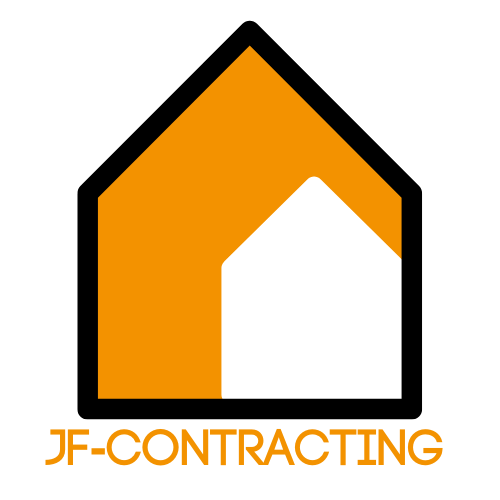Navigating the world of rental properties can feel like trying to find a needle in a haystack, especially when it comes to landlord disclosure requirements. Landlords might think they’re just handing over keys, but there’s a whole lot more to the game. From hidden mold to that mysterious stain on the carpet, knowing what a landlord must disclose can save tenants from unexpected surprises.
Overview of Landlord Disclosure Requirements
Landlords must comply with specific disclosure requirements to protect tenant rights. They need to reveal known material defects in the property, which can significantly affect habitability. Common issues include structural problems, pest infestations, or unsafe conditions.
Certain states mandate landlords to inform tenants about environmental hazards. The presence of lead paint requires disclosure for properties built before 1978, as lead exposure can lead to severe health issues. Additionally, some jurisdictions require notifications about asbestos or carbon monoxide risks.
Disclosures also extend to rental agreements. Landlords usually outline terms and conditions related to the security deposit, including amounts and return procedures. Specific requirements encourage transparency, ensuring tenants understand their responsibilities and rights.
Neglected disclosures can lead to legal actions. Landlords could face penalties or damages if they fail to communicate critical information. In many regions, landlords must provide tenants with local housing regulations. Knowledge of tenant rights enhances awareness and compliance.
Timely disclosures are essential. Providing information before lease signing helps prevent misunderstandings. Landlords who deliver this information efficiently foster a positive rental relationship and increase tenant satisfaction.
Many resources are available to guide landlords. Online platforms and local housing authorities offer information on disclosure requirements. Utilizing these resources ensures compliance and better tenant interactions, ultimately creating a smoother rental process.
Types of Disclosures Required
Landlords must provide specific disclosures to tenants to ensure transparency and compliance with laws. Recognizing these disclosure types can prevent misunderstandings and foster better tenant relationships.
Lead-Based Paint Disclosure
Properties built before 1978 require a lead-based paint disclosure. This disclosure informs tenants about potential lead hazards, protecting them from health risks. Landlords must provide an EPA-approved pamphlet titled “Protect Your Family from Lead in Your Home” along with the lease. Both parties need to sign the lead disclosure form to acknowledge the information received. Noncompliance can result in substantial fines and liabilities.
Mold Disclosure
Mold disclosure is necessary when moisture issues or mold growth are present. Landlords should proactively communicate any past or current mold problems in the property. Tenants should receive information about the health risks associated with mold exposure, enabling them to make informed decisions. By providing this disclosure, landlords demonstrate their commitment to tenant safety and compliance with health regulations. Failure to disclose mold issues may lead to legal ramifications.
Security Deposit Disclosure
Security deposit disclosures outline key terms regarding security deposits. Landlords must clearly state the amount of the security deposit, its purpose, and conditions for its return. The law often requires landlords to specify how and where the deposit will be held. Tenants should also receive information about any deductions that may occur upon lease termination. Clear communication regarding security deposits helps establish trust and mitigate disputes post-tenancy.
State-Specific Requirements
Landlord disclosure requirements vary significantly across states. Understanding these differences helps ensure compliance and fosters positive tenant relationships.
California Landlord Disclosure Laws
California mandates several disclosures for landlords. Known for strict regulations, the state requires landlords to inform tenants about lead-based paint, mold presence, and any registered sex offenders living nearby. Additionally, landlords must disclose the property’s bedbug history if applicable. A unique requirement encompasses the Water Heater instructions, emphasizing maintenance. Providing these disclosures in writing helps avoid potential legal disputes and supports tenant safety.
New York Landlord Disclosure Laws
New York also enforces rigorous disclosure laws for landlords. They must provide tenants with information about lead paint in buildings constructed before 1978 and ensure that tenants receive a written notice detailing their rights. Furthermore, landlords should disclose any known pest infestations. New York additionally mandates the sharing of smoke detector and carbon monoxide detector compliance statuses. Real estate professionals often recommend maintaining thorough records to bolster compliance and enhance transparency.
Consequences of Non-Disclosure
Non-disclosure can lead to significant issues for landlords, impacting both legal standings and financial outcomes.
Legal Ramifications
Landlords face numerous legal consequences for failing to disclose required information. Statutes vary by state, and some jurisdictions impose strict penalties on landlords who withhold essential details. Non-compliance can result in lawsuits filed by tenants seeking damages. Furthermore, landlords might lose their right to evict tenants if a court deems them liable for non-disclosure. Documented proof of good faith communication strengthens a landlord’s defense in legal cases, reinforcing the necessity for transparency in rental agreements.
Financial Implications
Financial penalties accompany legal repercussions, often affecting landlords’ profitability. Costs linked to fines can significantly exceed $1,000 in certain states. Additionally, if tenants take legal action, landlords may incur attorney fees and settlement costs. Renters might also seek reductions in rent or refunds based on undisclosed defects, resulting in lost income. Frequent litigation related to non-disclosure erodes landlords’ financial stability and disrupts operational cash flow. Proper disclosure safeguards landlords from financially damaging situations while enhancing tenant relationships.
Best Practices for Landlords
Landlords should prioritize transparency when disclosing property conditions. Clearly communicate known issues like mold or structural defects to avoid tenant disputes. Document all disclosures in writing to create a clear record for both parties.
Providing tenants with necessary disclosures regarding security deposits is crucial. Outline the deposit amount, purpose, and conditions for return to prevent misunderstandings.
Consistency in following state-specific disclosure laws is important. Some states require landlords to share details about environmental hazards such as lead paint and carbon monoxide, in addition to pest infestations.
Establishing a habit of timely communication enhances trust. Discuss any relevant issues before signing lease agreements to reinforce positive relationships.
Educating oneself about disclosure requirements helps mitigate legal risks. Landlords who remain informed about evolving laws can protect their interests effectively.
Maintaining thorough records of all disclosures aids compliance efforts. It’s essential for landlords to keep documentation of tenant acknowledgments for future reference.
Utilizing available resources can simplify the disclosure process. Various online platforms offer guidance on state-specific laws and best practices.
Fostering a proactive approach toward disclosures supports tenant satisfaction. Listening to tenants’ concerns and addressing them promptly can build a dependable rental environment.
Conclusion
Landlord disclosure requirements are essential for creating a fair and transparent rental experience. By understanding and adhering to these obligations, landlords can protect their interests while fostering trust with tenants. Clear communication about property conditions and compliance with state-specific laws not only minimizes legal risks but also enhances tenant satisfaction.
Investing time in proper disclosures and documentation can lead to smoother interactions and a more positive rental environment. Ultimately, prioritizing transparency serves as a foundation for successful landlord-tenant relationships, ensuring both parties are informed and protected throughout the rental process.












